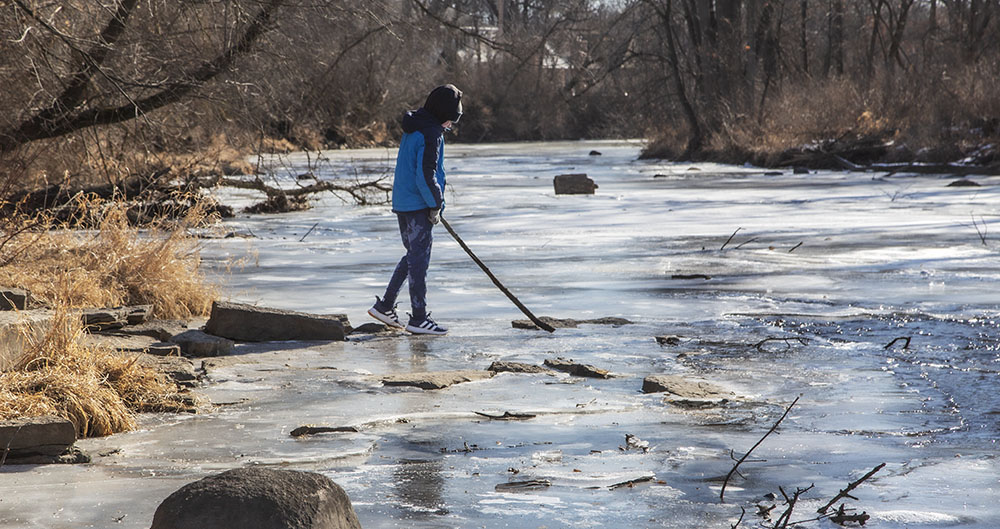
How to have fun safely on the ice
January 12, 2025 | Topics: Stories
By Craig Mattson, Schlitz Audubon Nature Center
Photography by Eddee Daniel
Note: The photographs that accompany this story are from a variety of parks as indicated in the captions. Links in the captions will take you to our Find-a-Park pages so that you can learn more about the parks if you wish.
Ice is one of the most beautiful sights of the winter season, be it the sheen on the surface of a pond or intricate ice formations. It is often a place to walk and travel on, too. If you’re planning to explore, play, fish, or otherwise traverse the icy surface of a water body, there are a few precautions you should take to help ensure safety on the ice.
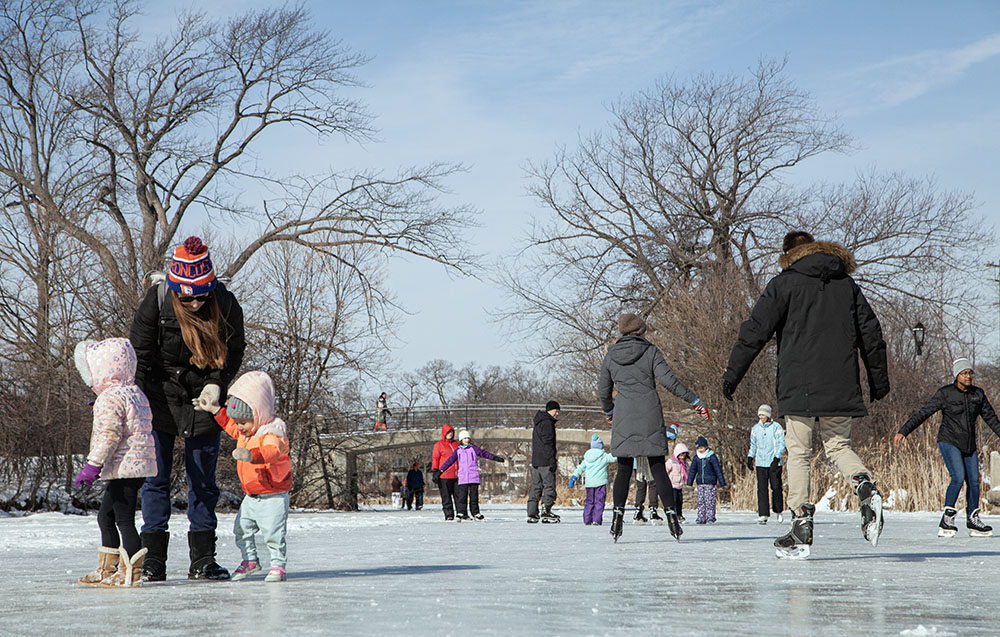
Three Conditions to Avoid
One thing to consider is the types of ice to avoid. There are three dangerous conditions that you should be aware of. One is ice located on the surface of moving water, such as a river. Moving water doesn’t freeze evenly, leading to thin patches.
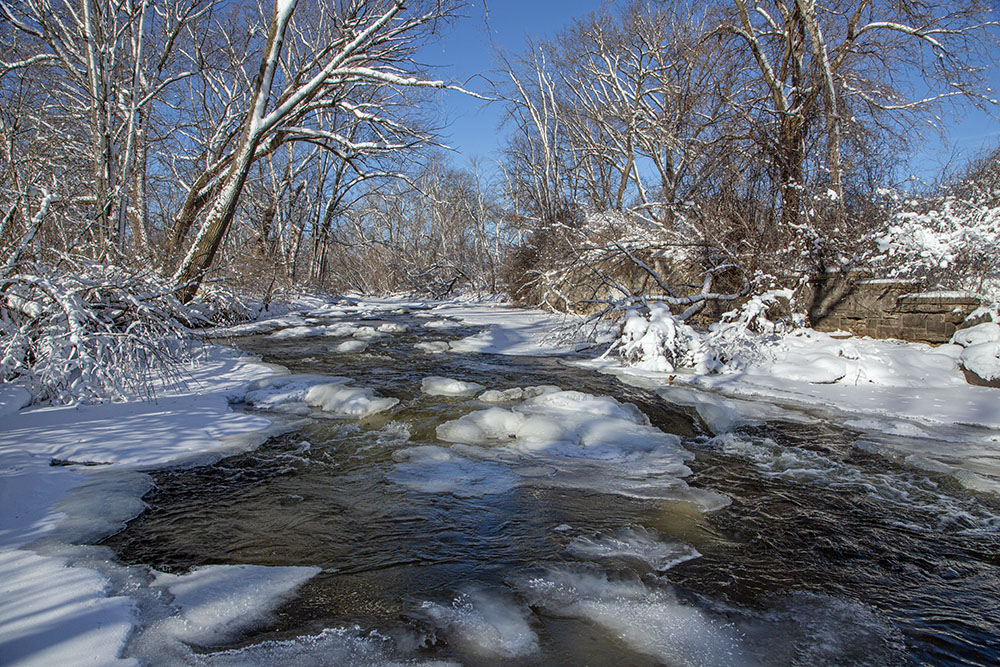
The second condition is seen in large bodies of water, such as Lake Michigan. Because of its size, Lake Michigan remains slightly warmer and doesn’t freeze as evenly as a smaller water body. In fact, Lake Michigan never fully freezes. Ice that can look solid is often unpredictable in its strength. The ice shelf that forms at the Center’s Lake Michigan shoreline should be approached with caution for these reasons.
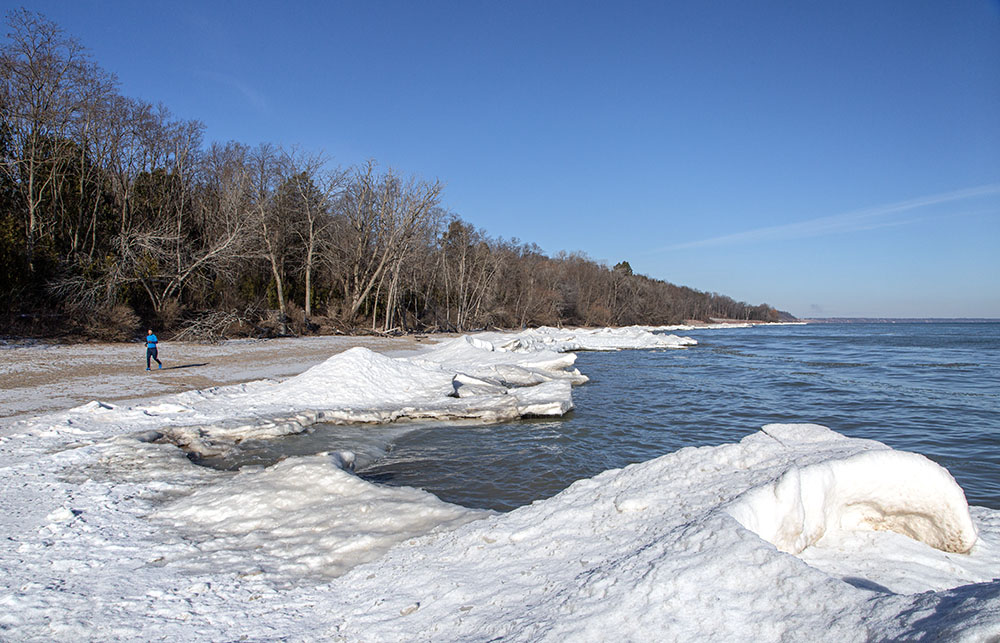
The third condition to be aware of is water by a spring. You can tell where these are by a raised hill-like area near the shore. These often indicate spring activity. Springs promote water movement, which can weaken the surface ice.
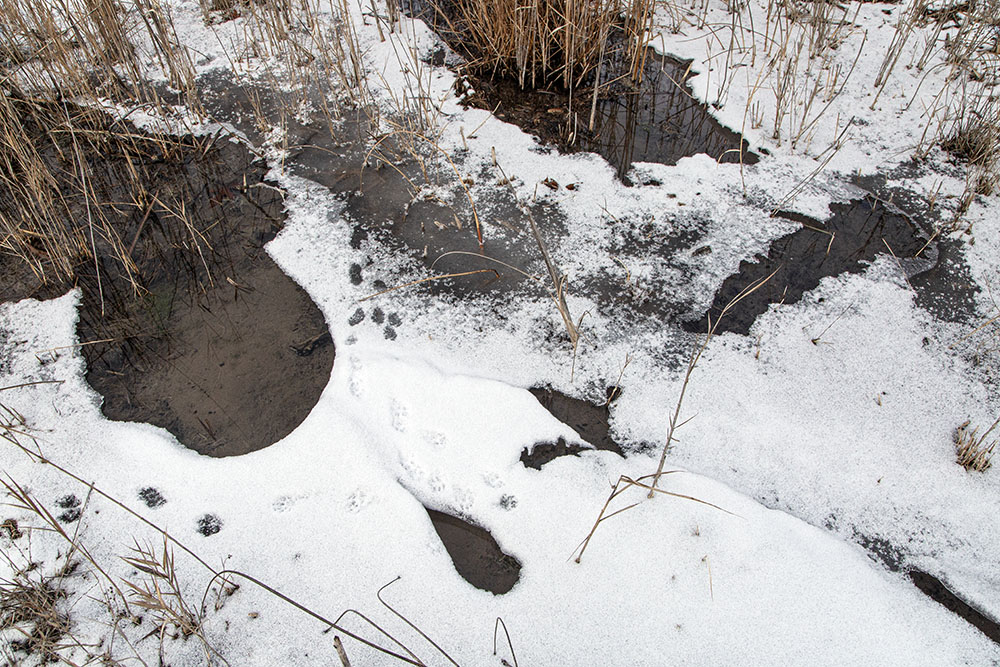
Ways to Gauge Ice Safety
Once you are mindful of these three dangerous areas, there are ways to make sure that any ice you want to travel on is strong enough. One thing to keep in mind is that it’s difficult to judge the thickness of any ice by sight. Light refracts on the surface, making the ice look thinner than it is. There are simple tools that will help you gauge the thickness of the ice, such as an ice pick and a nail. Simply tap the nail into the surface, waiting to see where it breaks through the bottom layer, and make note of the thickness at that point.
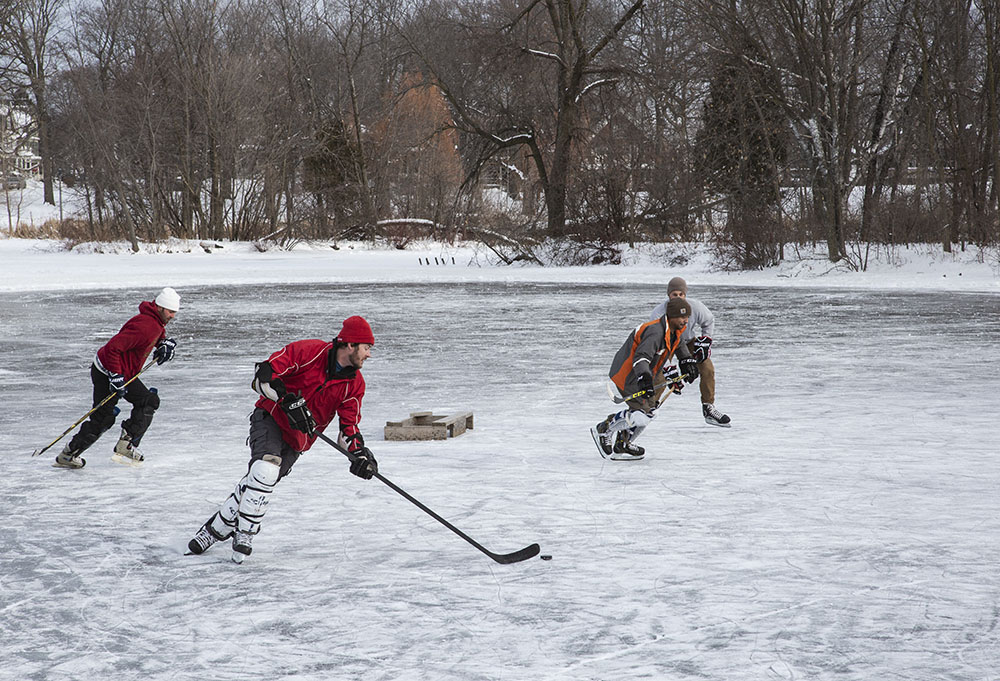
If you have access to larger equipment, you might also use a drill to bore into the ice, or even an augur. These are quick ways to see how thick the ice is, but require some more planning, and will have you carrying more weight onto the ice.
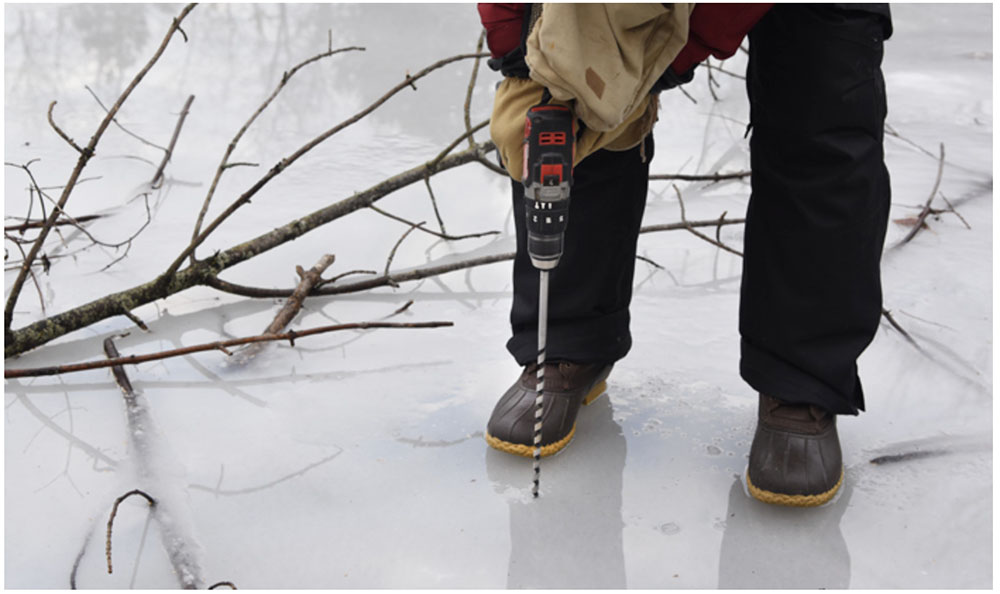
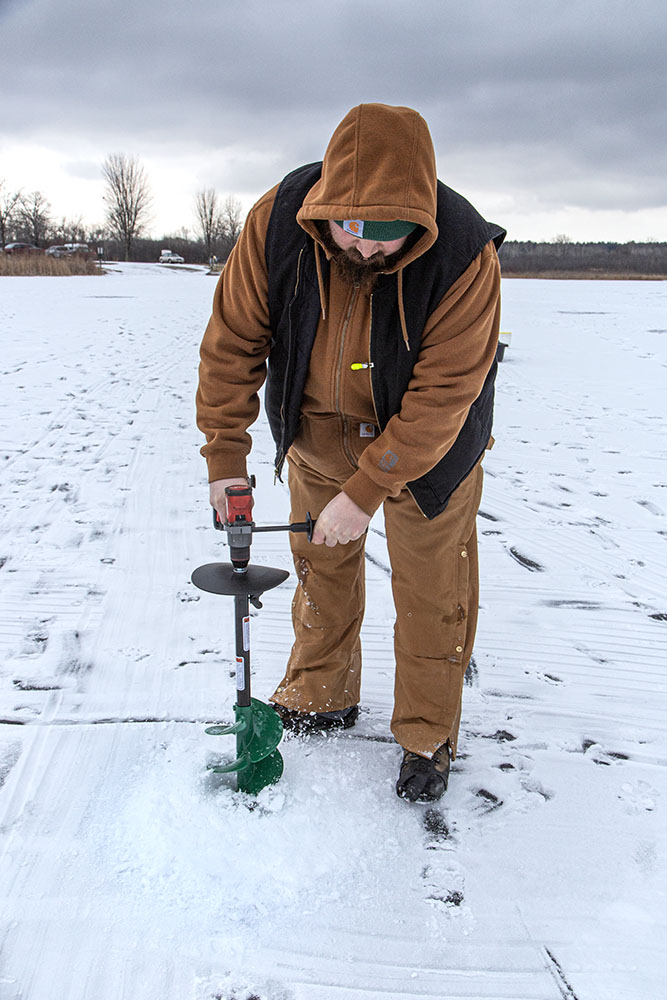
Once Naturalists at the Center know the thickness of the ice from using an ice pick and nail, they will slowly test it by first stepping onto the ice with one foot, then adding their full weight. Once they know their full weight will hold, Naturalists will begin to shift a little on the surface, then kick the ice to ensure it is strong enough to hold them and their students.
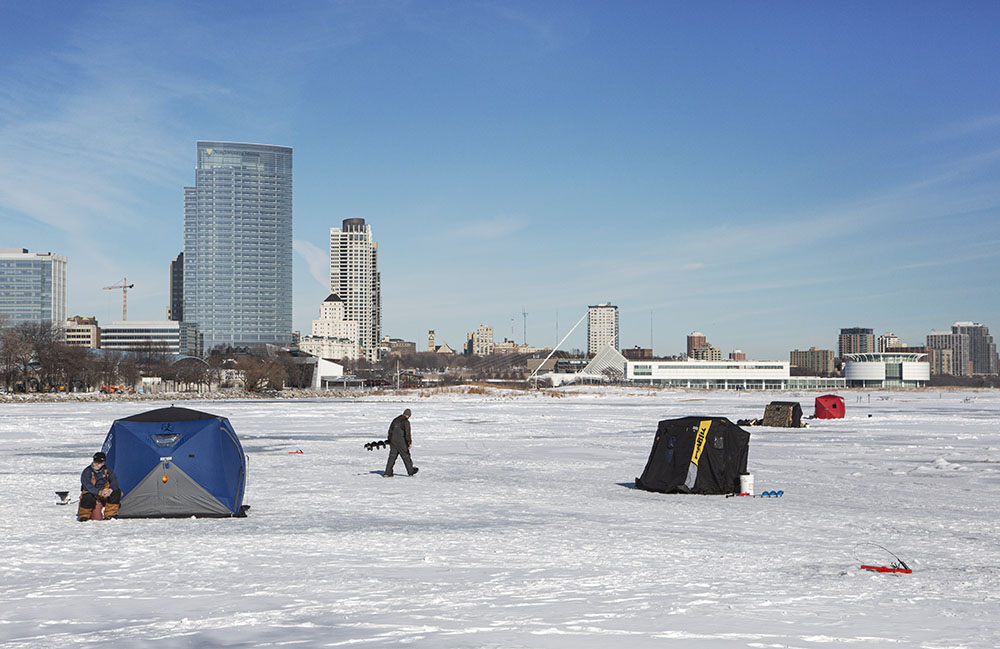
You can use an ice safety thickness chart to determine if the ice is thick enough to walk on. There are many sources of ice safety information, and many organizations suggest different thresholds for thickness. One of them is the Farmer’s Almanac. It recommends the ice be three inches thick for one person to stand on it, and four inches for a group in single file. A two-ton car will need 7.5 inches. Other sources to consider include ice safety charts from the Army Corps of Engineers and the Minnesota DNR [or the Maine Lakes Environmental Association, below].
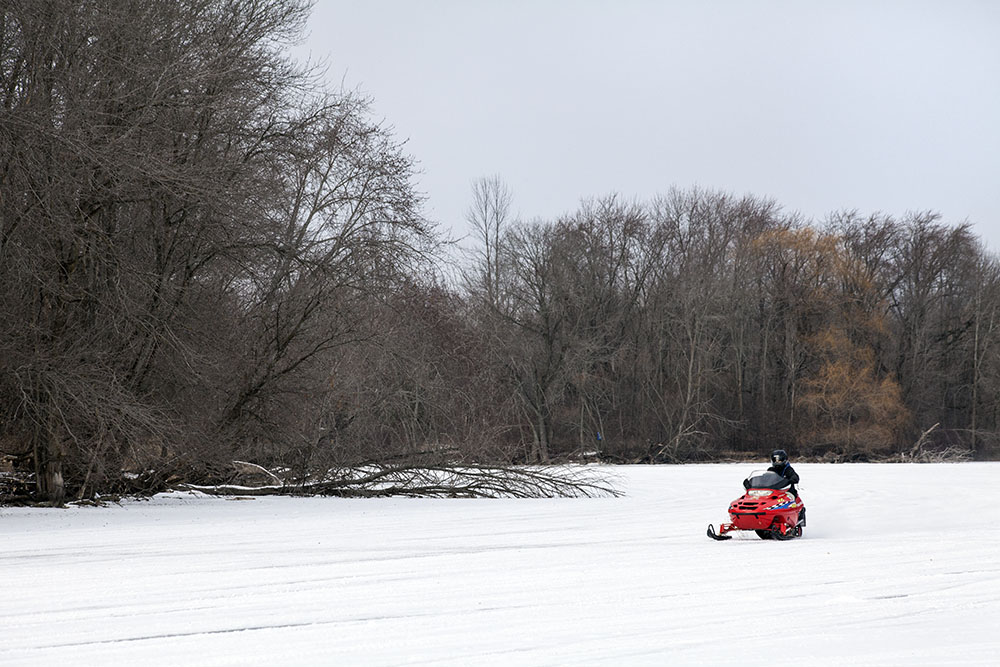
Surface and Ice Conditions
Consider the kind of ice you encounter. Knowing areas of the ice’s surface that are weaker will help you avoid accidents. Clear ice, also called black ice, is the strongest. White or hazy ice, caused by slush or snow mixing with the ice when it was formed, is half as strong as clear ice. If the area you are walking on has white ice, make sure there is also enough clear ice beneath it to hold your weight.
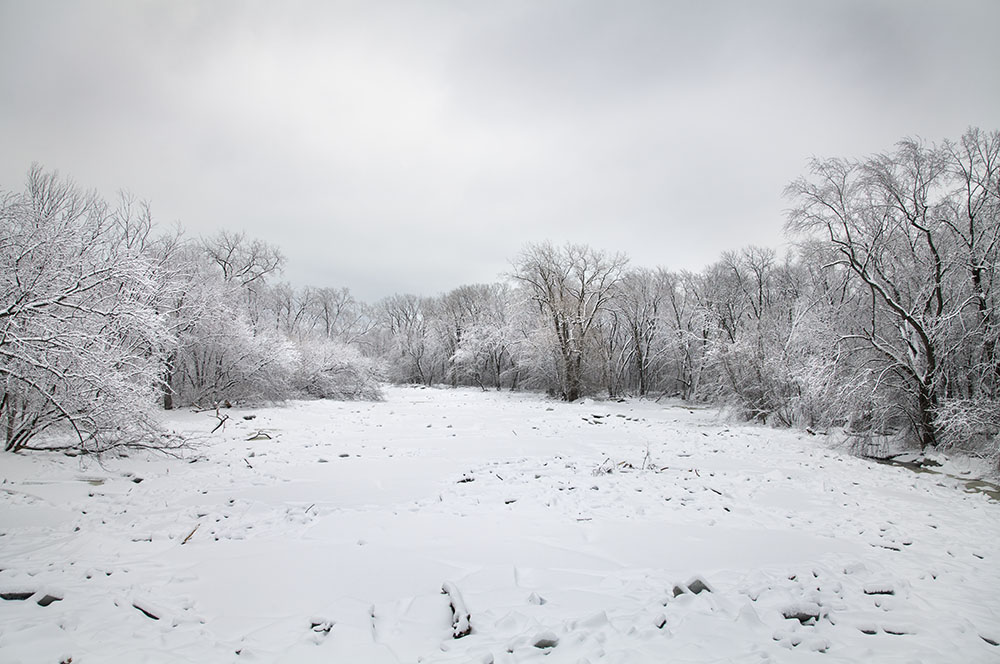
Also, be aware of the area near the edge of the water, where snow can accumulate. This insulates the water from freezing. Another thing to watch for is plant material on the surface, where there may be dark areas at the point where the object meets the surface. The dark areas attract sunlight, melting the ice.
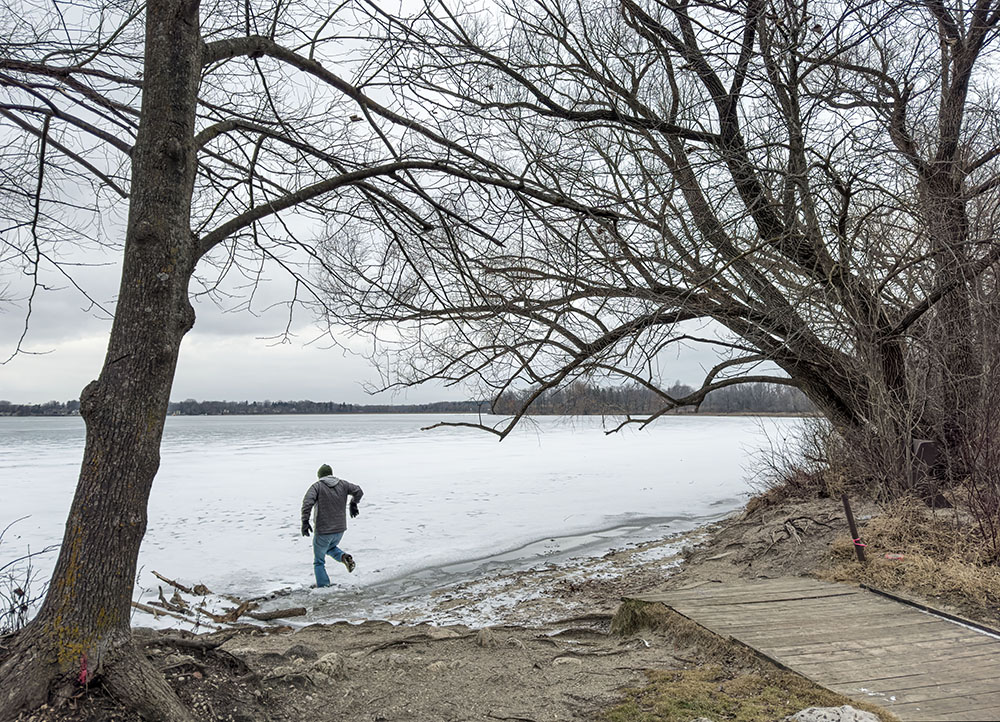
The right kind of ice is safer than you might think. Fluctuating temperatures have less of an effect on thickness because water has a high specific heat, which means it takes a lot of energy to make water change state from solid to liquid. Ice is slow to respond when the temperature gets warmer.
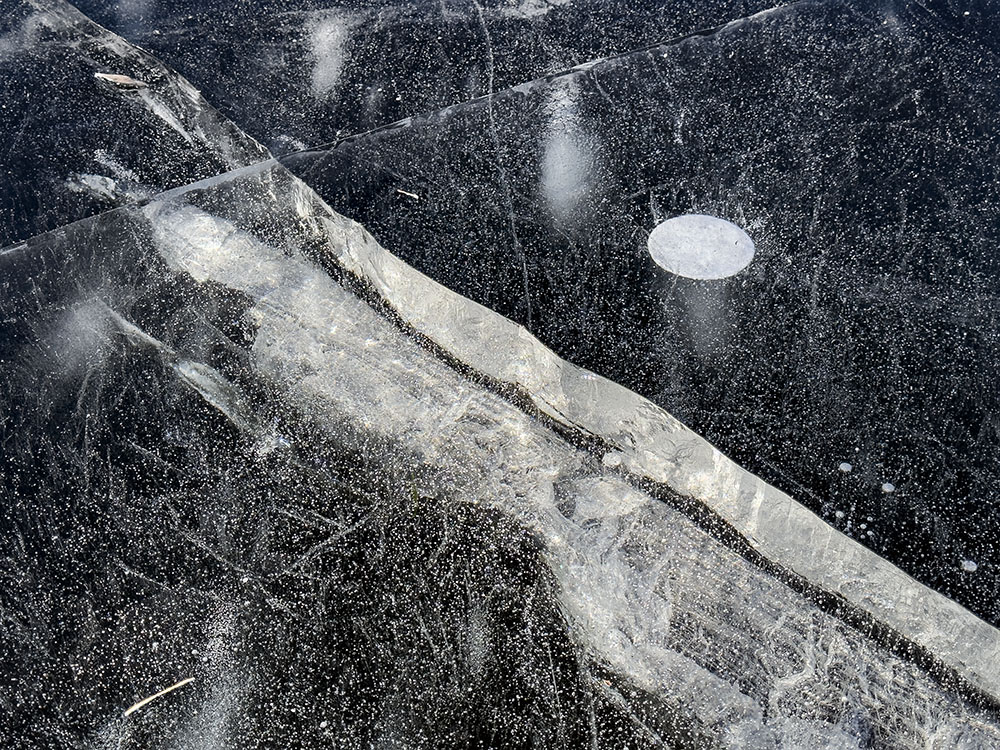
Water naturally expands when it freezes, and you will often hear the sound of this when it happens. Be very cautious when the ice cracks, especially with snow-covered ice. However, the cracking sound this makes does not necessarily signal danger. Ice is flexible, so it bends with people’s weight. When the ice thickness is determined to be safe, small fluctuations on the surface are usually slow to have an effect. When in doubt, stay off cracking ice.
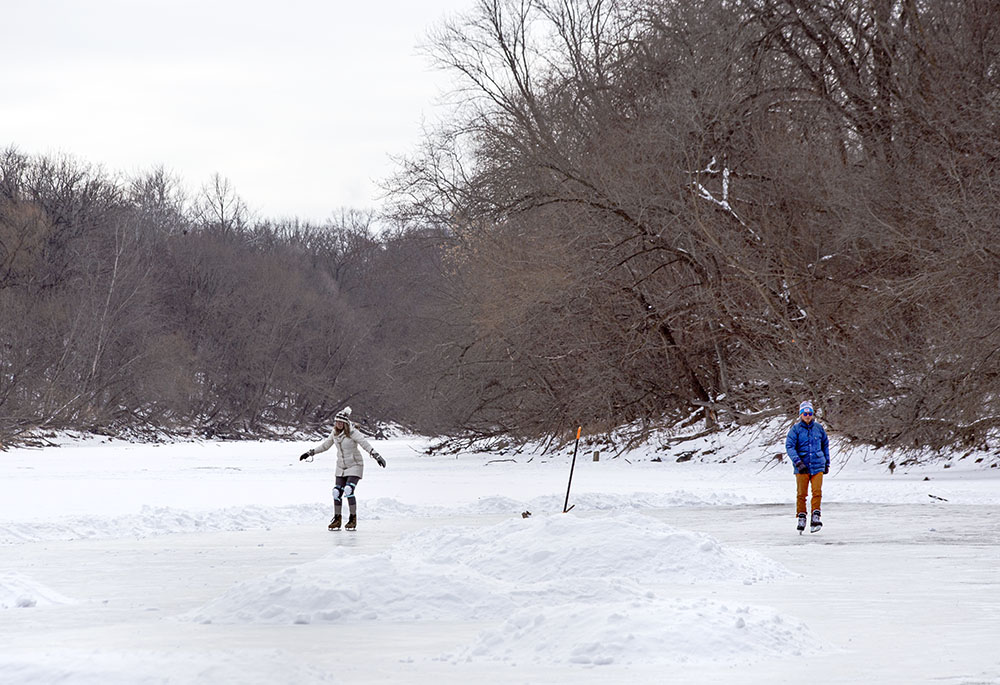
These easy to follow safety steps will help you have a good time doing any activity on the ice. If possible, have a buddy system in place, too. When you’re on the ice with a group of people, they can watch out for one another. Knowing effective safety precautions will help you to keep your peace of mind, allowing you to enjoy your time outdoors.
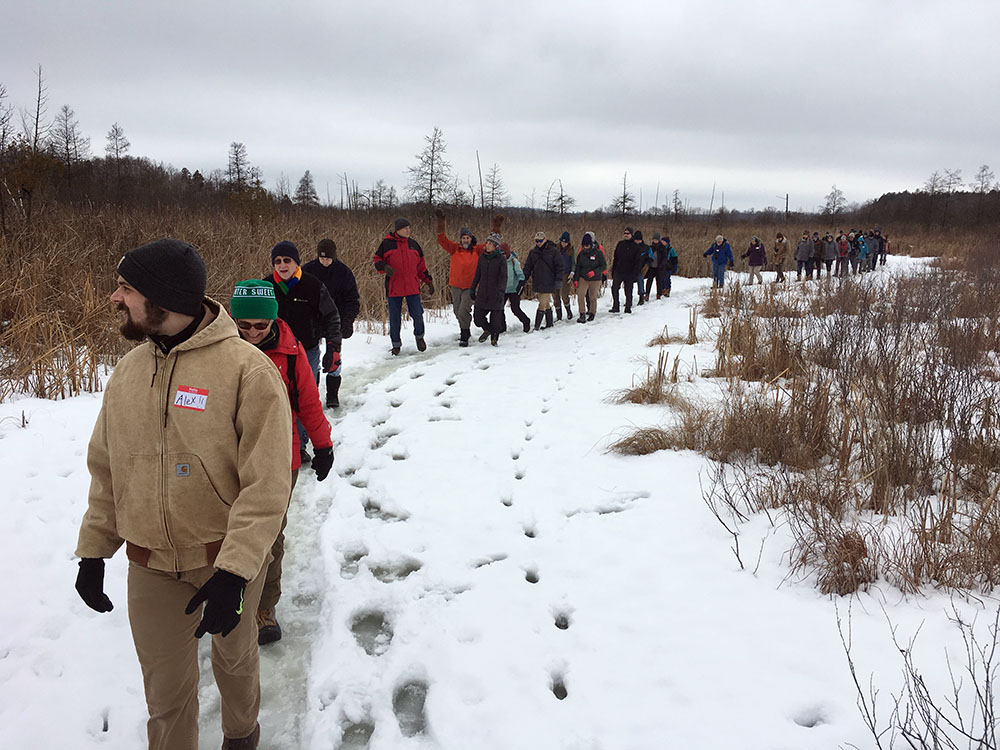
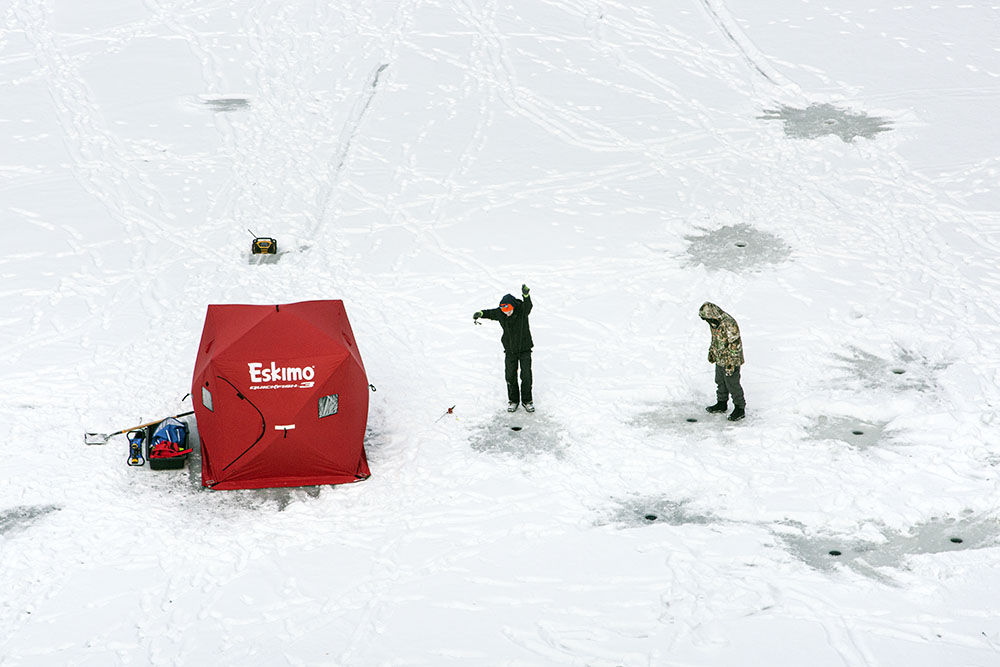
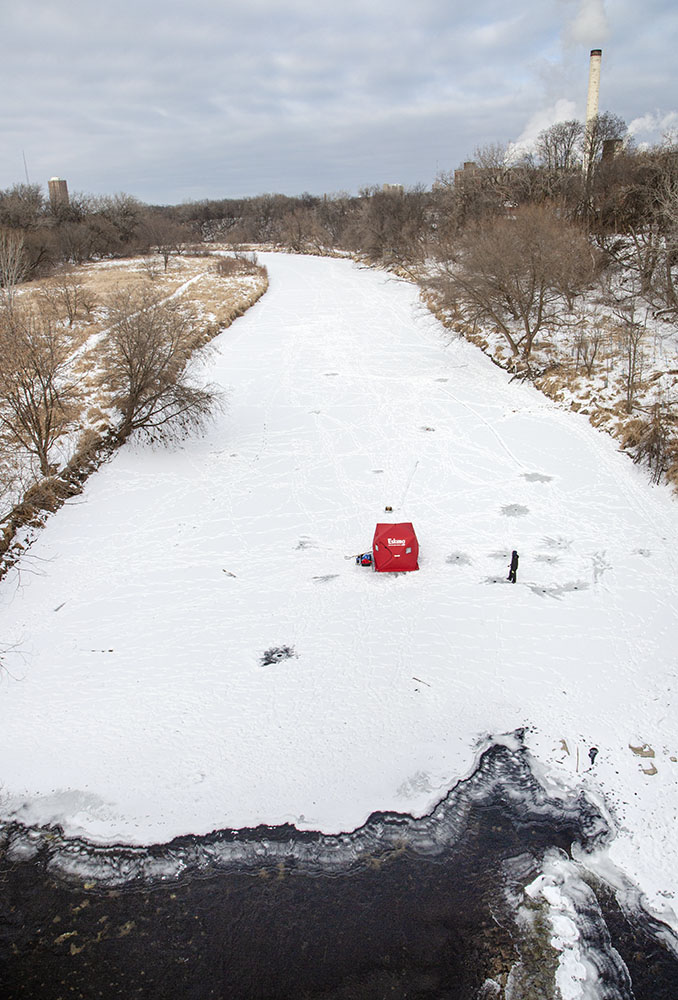
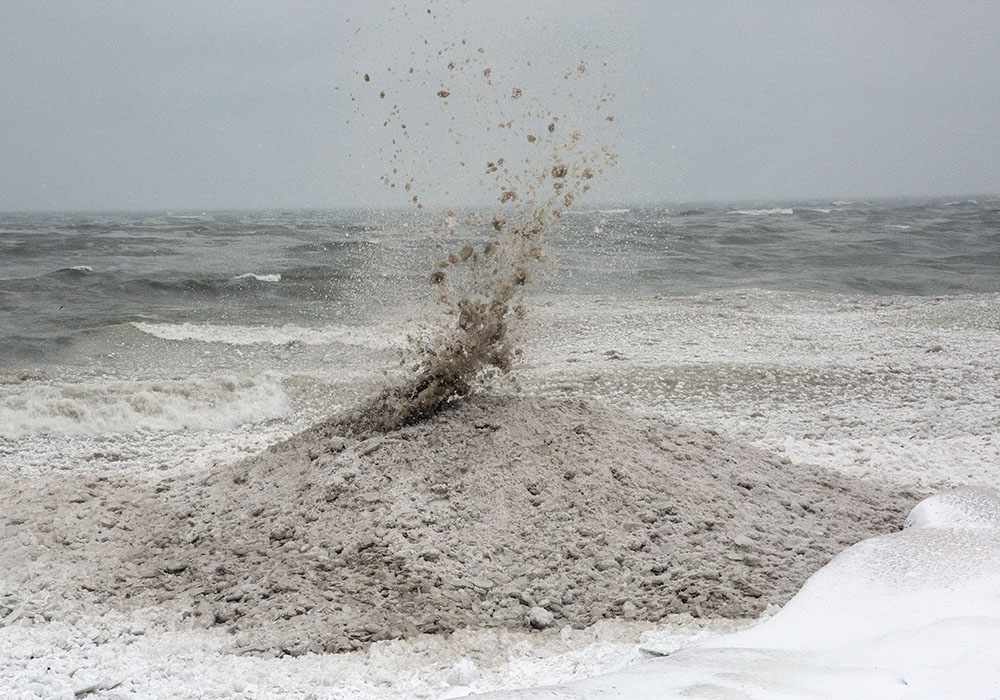
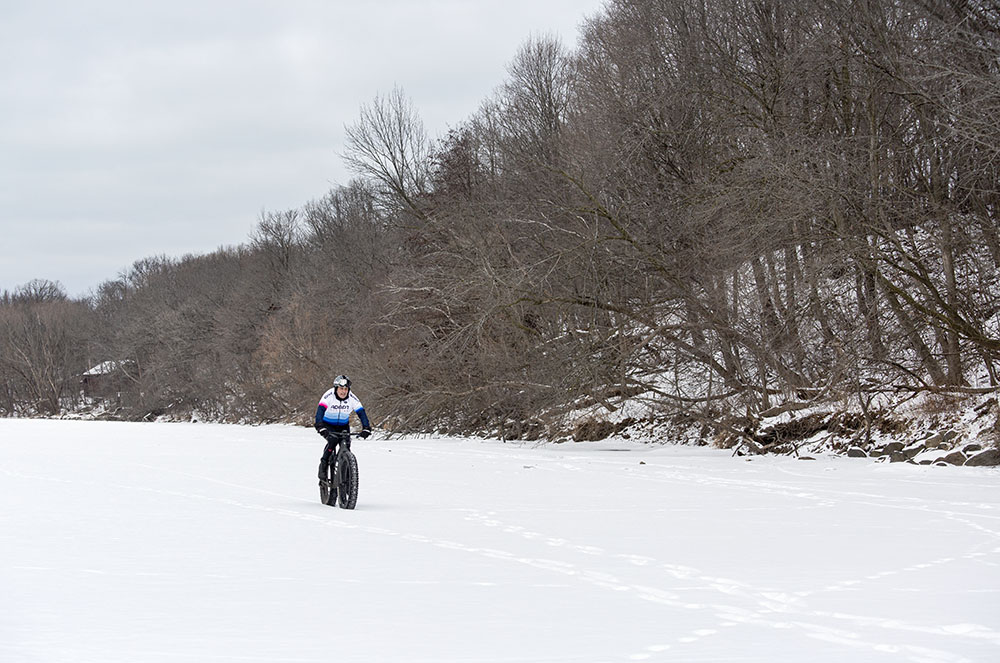
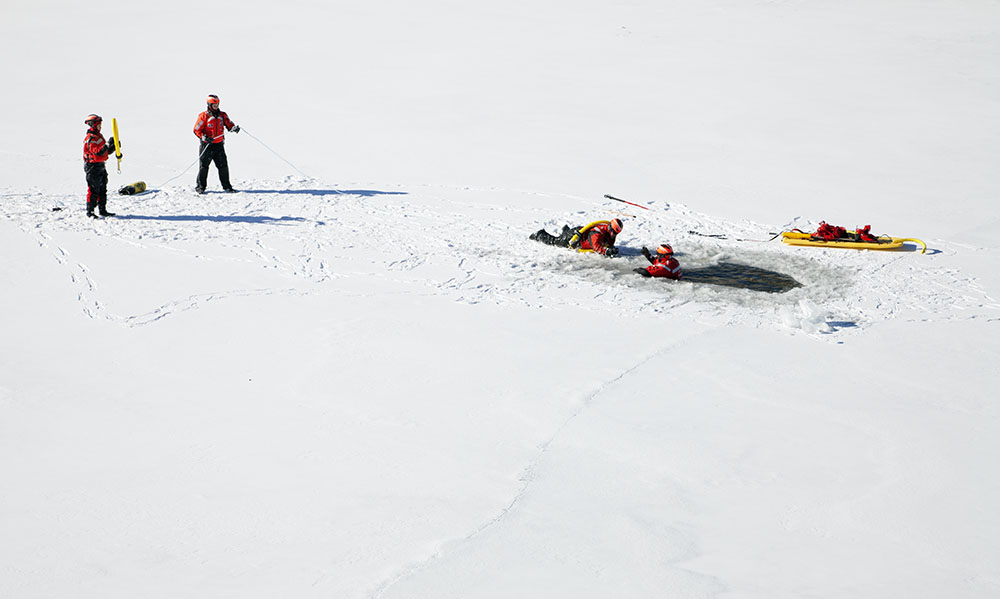
Note on photography below: I was inspired by this article to go to Greenfield Park when the ice was still clear. While most people think of going on ice for active sports like skating, hockey, and other things pictured above, what I like to do is find interesting things to photograph in the ice itself. This is a selection. ~ Eddee
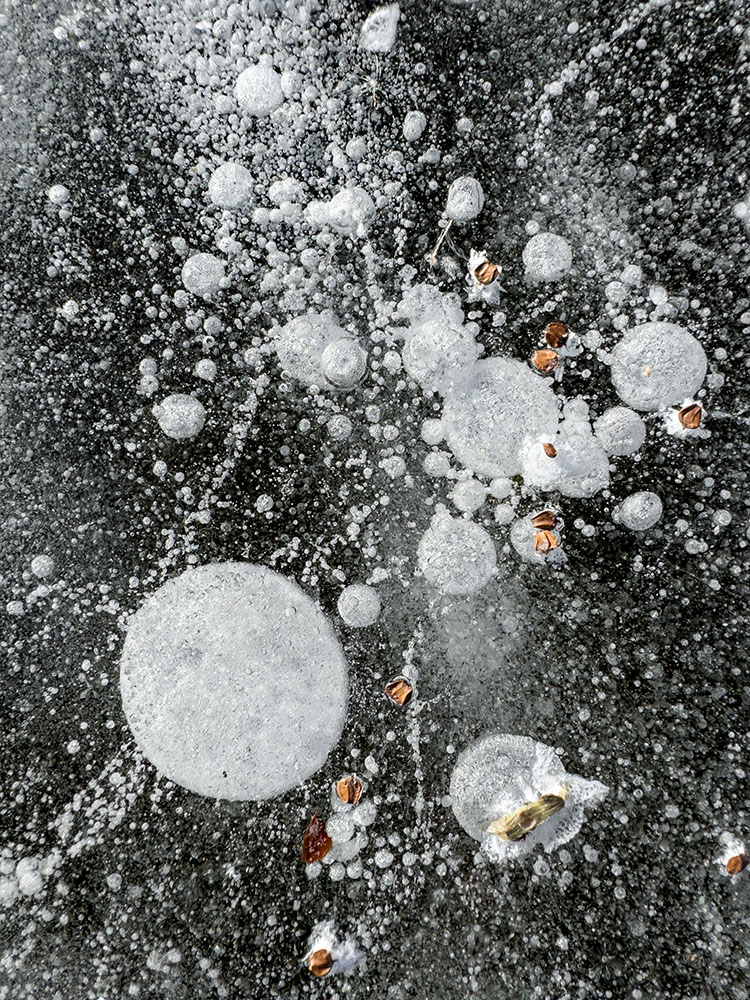
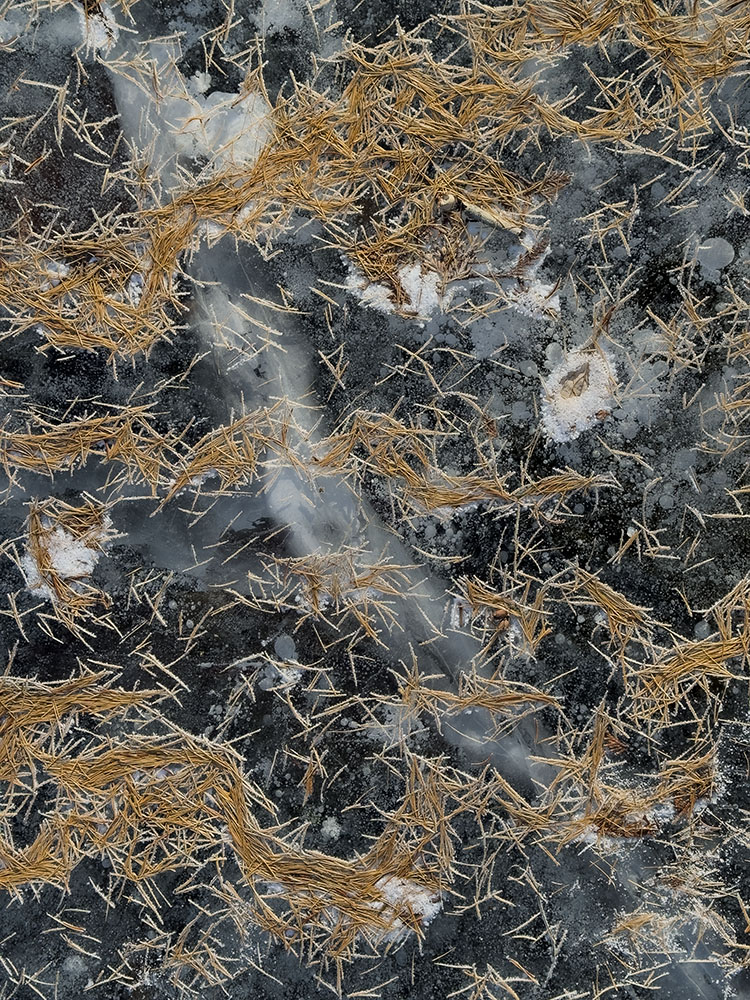
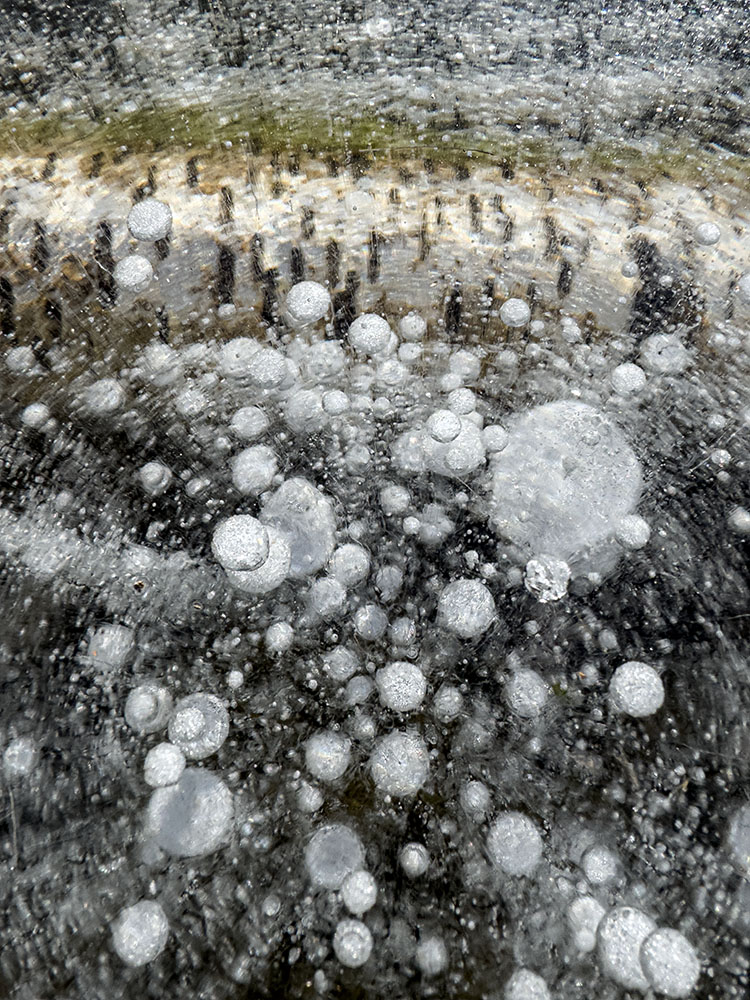
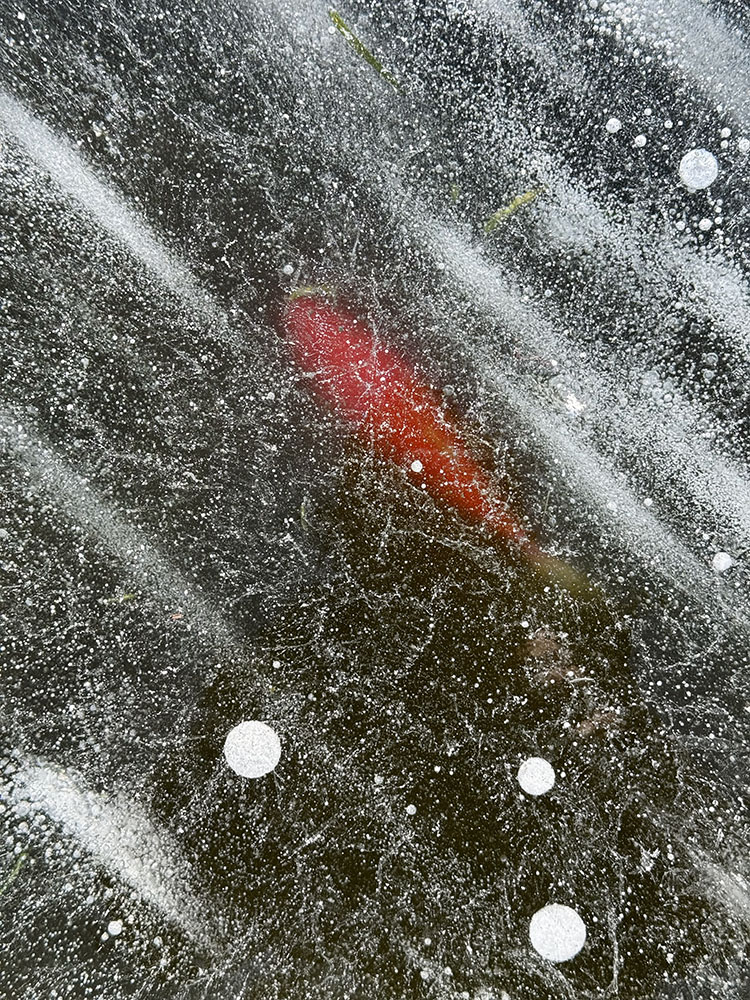
For more information about ice safety go to the Farmer’s Almanac website.
Related stories:
A Walk in the Wilderness of Cedarburg Bog!
Winter is Lake Michigan’s showiest and finest hour
Winter Waterfalls: Manitowoc and Brown Counties
Winter fun all over SE Wisconsin!
Craig Mattson was a Communications Specialist at Schlitz Audubon Nature Center when he wrote this story. This story originally appeared without the photos in the Schlitz Audubon Nature Center blog. It is reprinted here with permission. The photo at the top of the boy testing the ice on a river is from the Menomonee River Parkway in Wauwatosa. All photos by Eddee Daniel, except as noted. Eddee Daniel is a board member of Preserve Our Parks and a member of Schlitz Audubon Nature Center, which is also a project partner of A Wealth of Nature.
2 thoughts on "How to have fun safely on the ice"
Comments are closed.



I fell through the ice on the Milwaukee River when I was around nine years old. I had to walk home through fields for over a mile. Needless to say, I was terrified, and my snowsuit was frozen solid when I got home. I don’t go out on ice much anymore.
Thanks for the cautionary note, Dave! I have fallen through ice myself (though not at an impressionable early age). The first rule is not to venture onto ice alone. The second is to determine that it is safe as mentioned in the story. Eddee